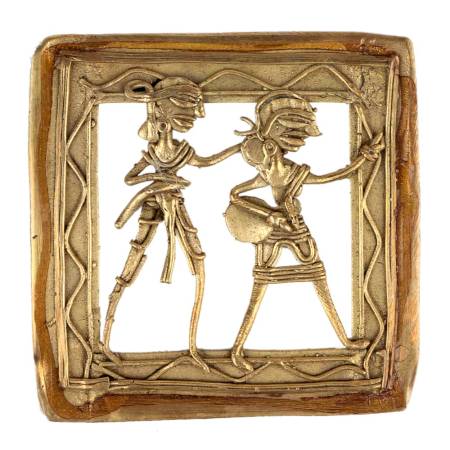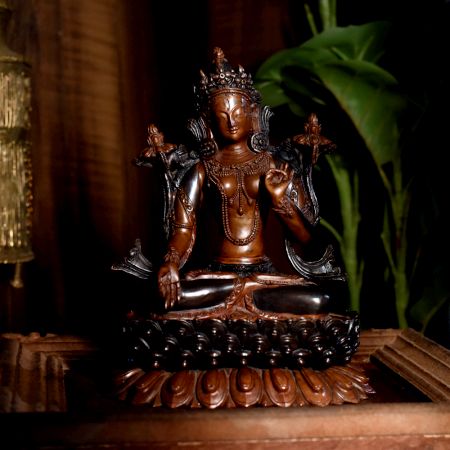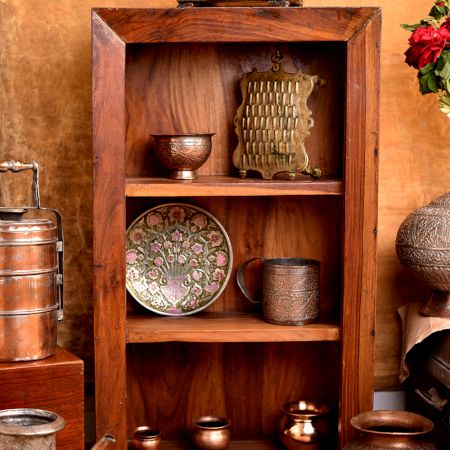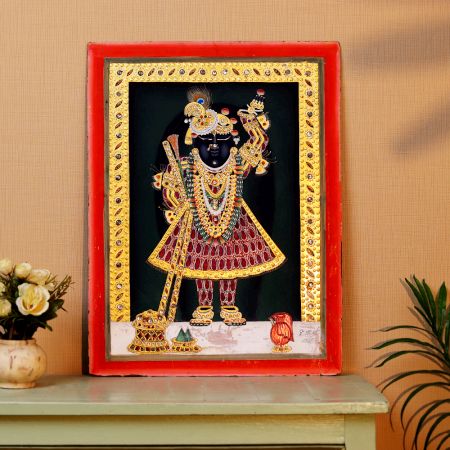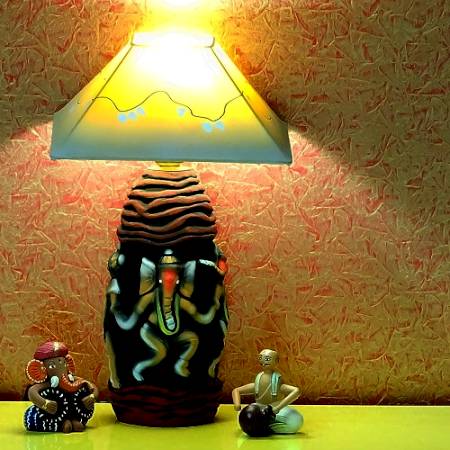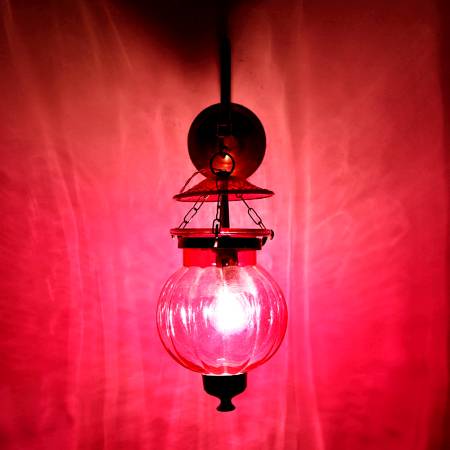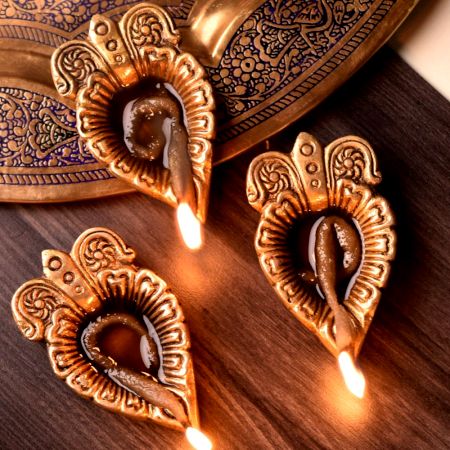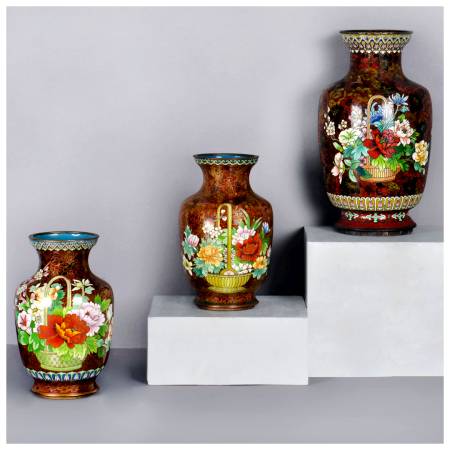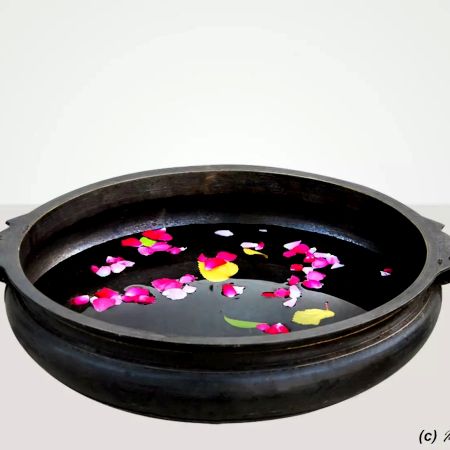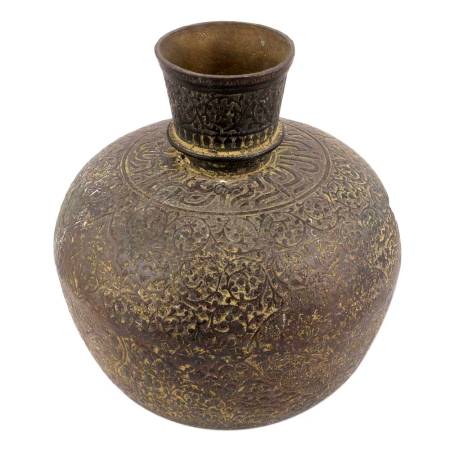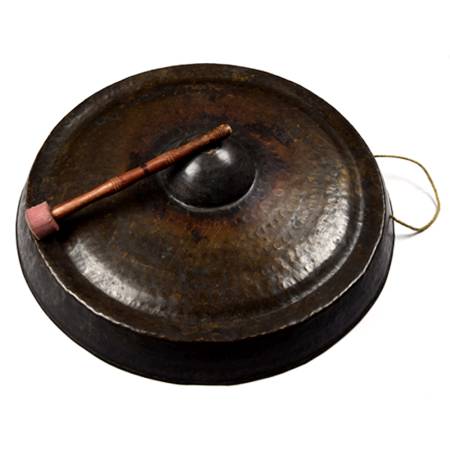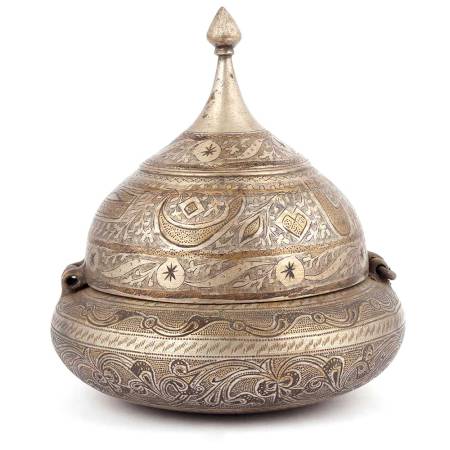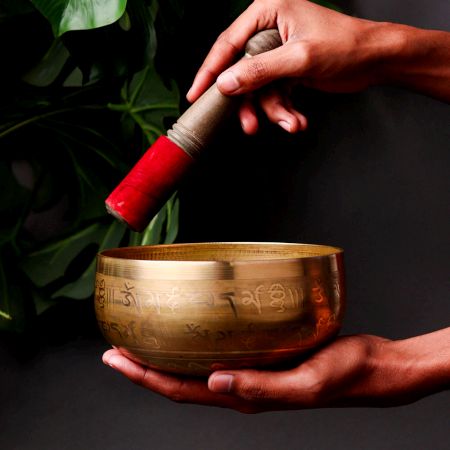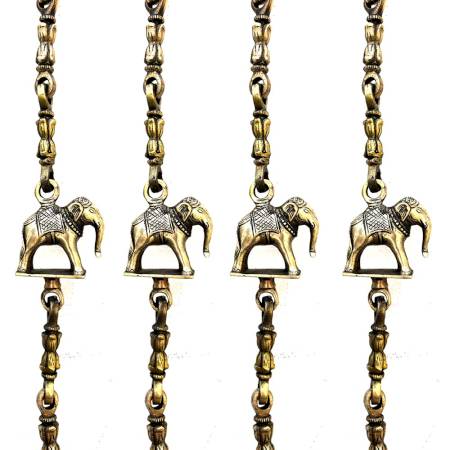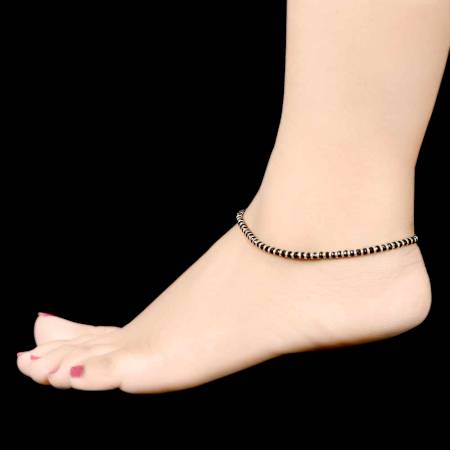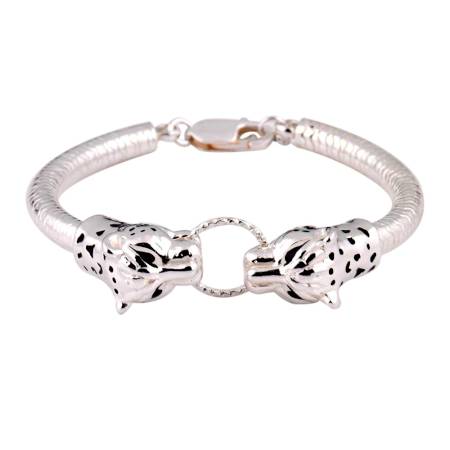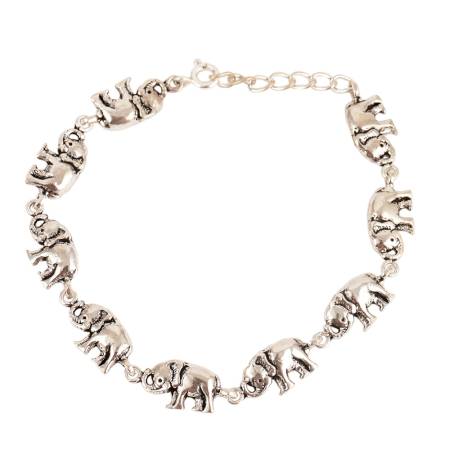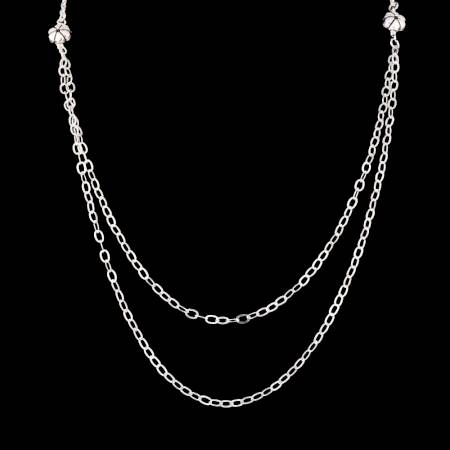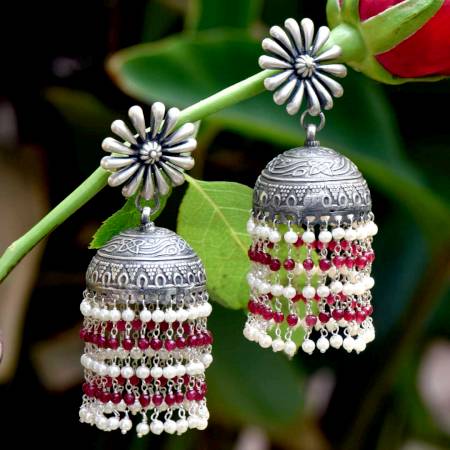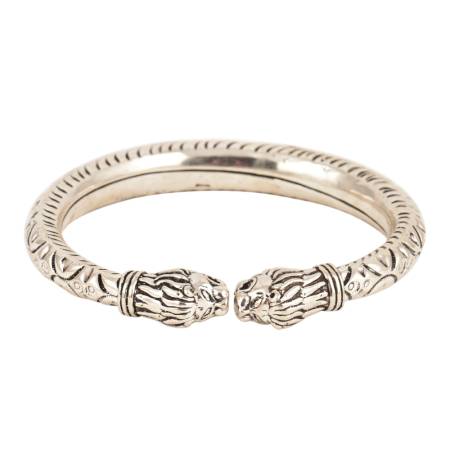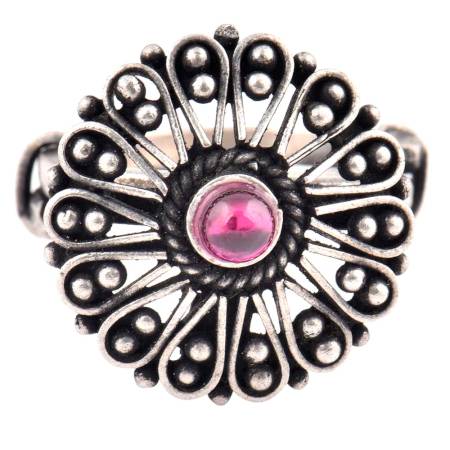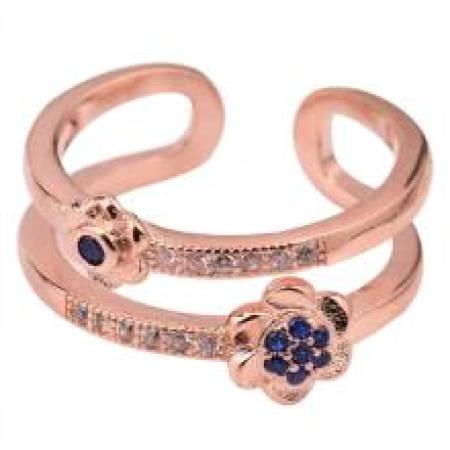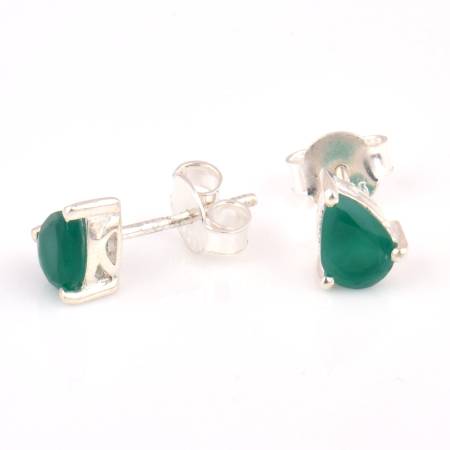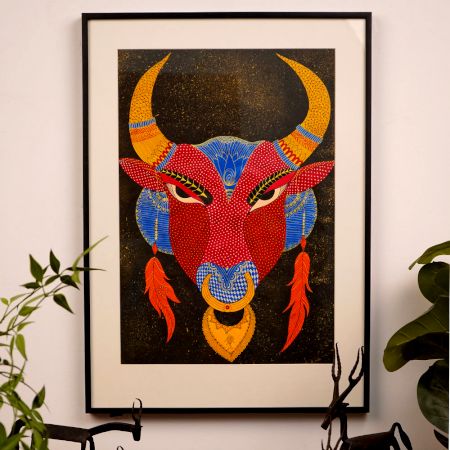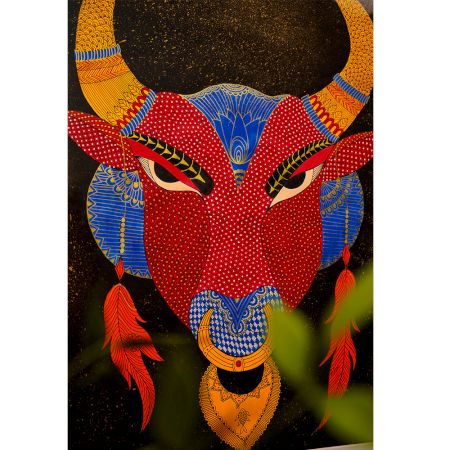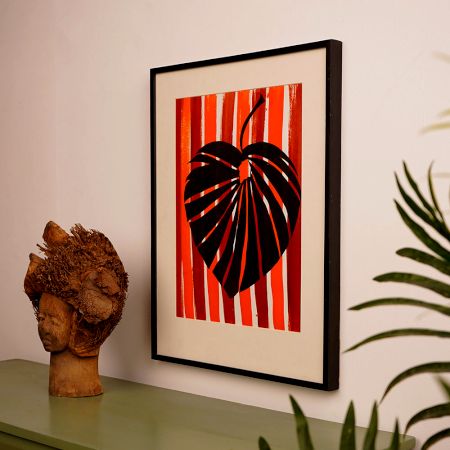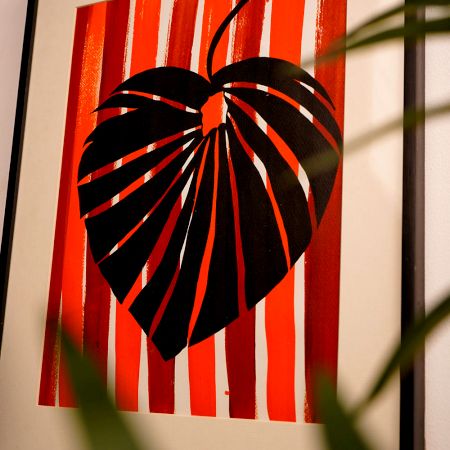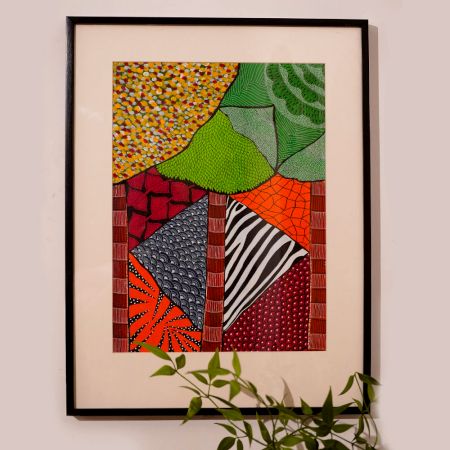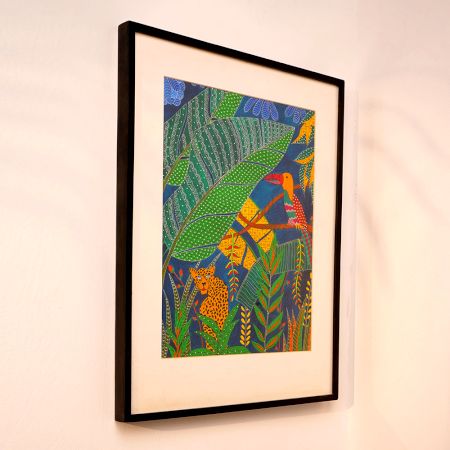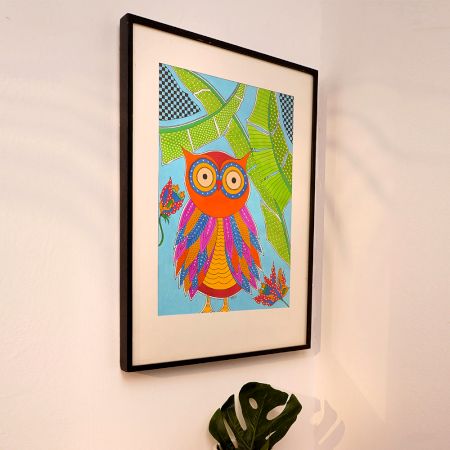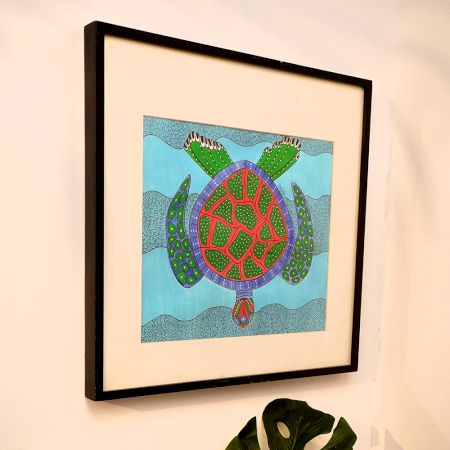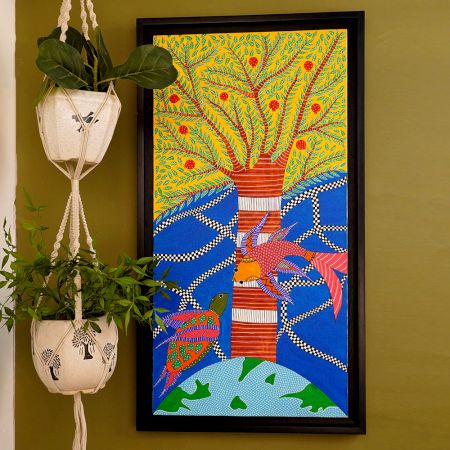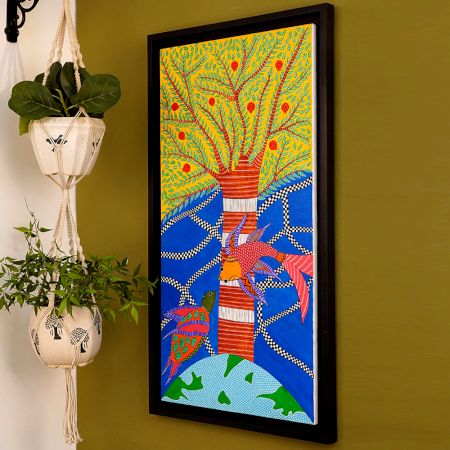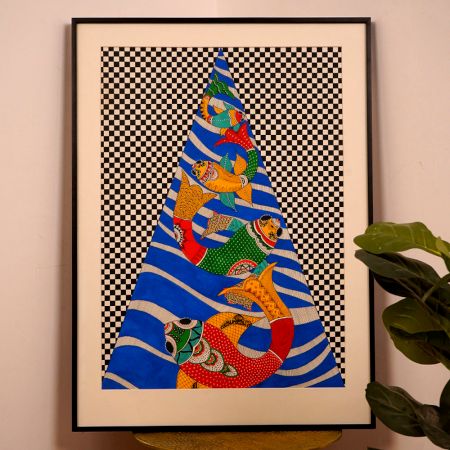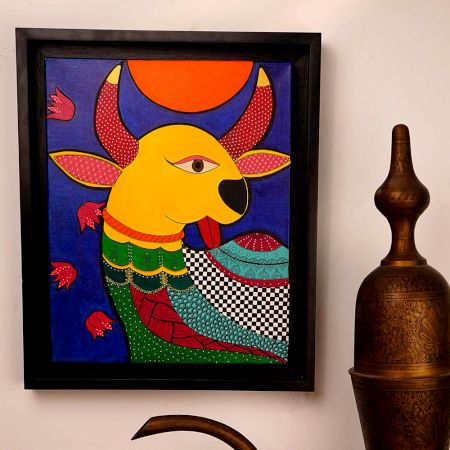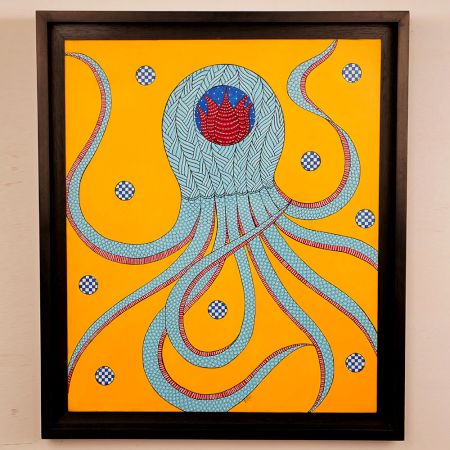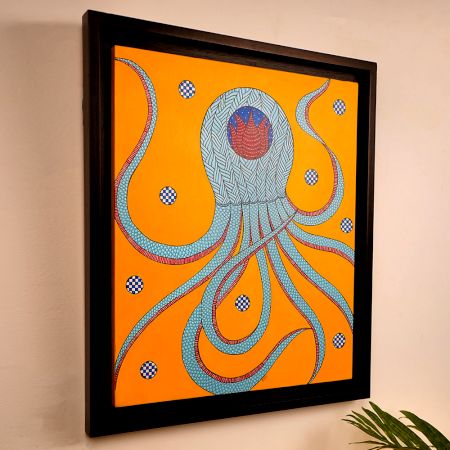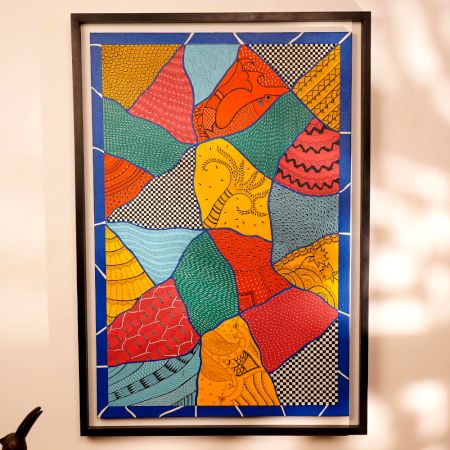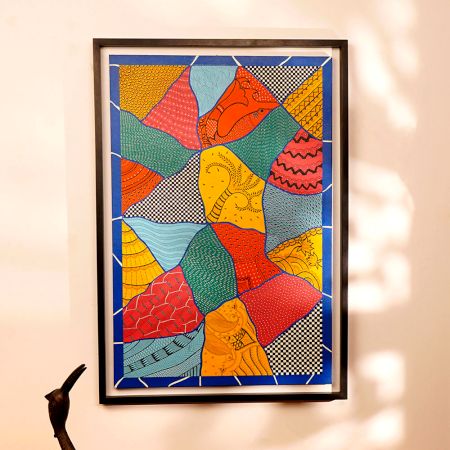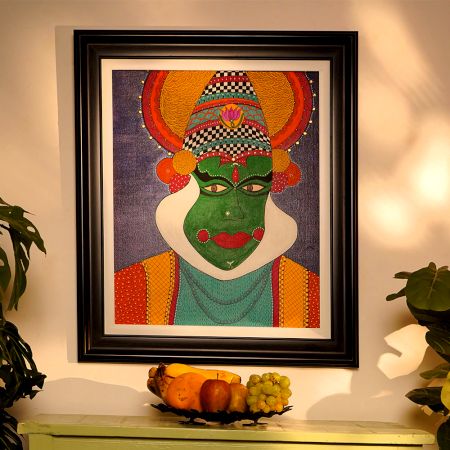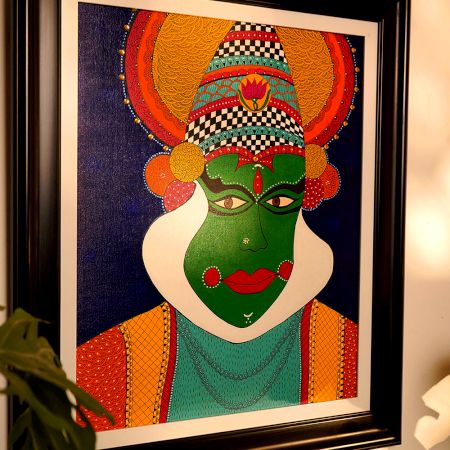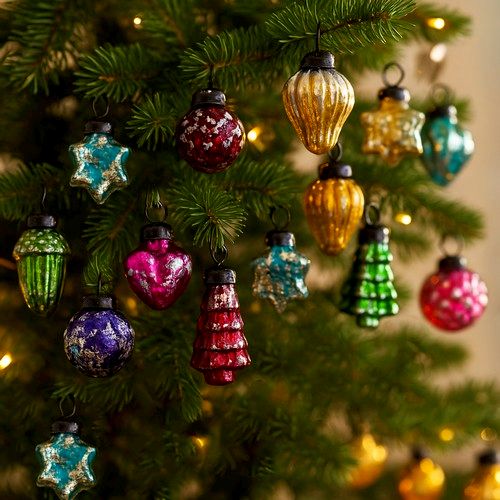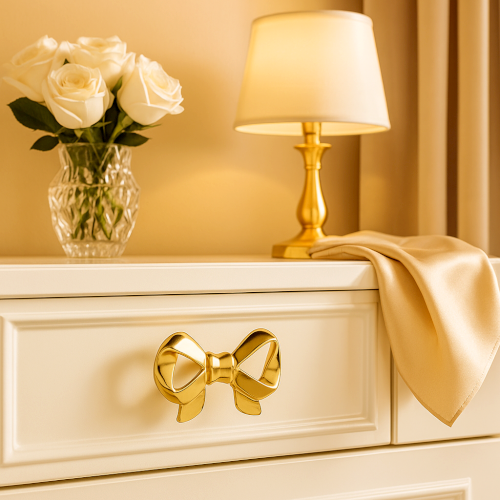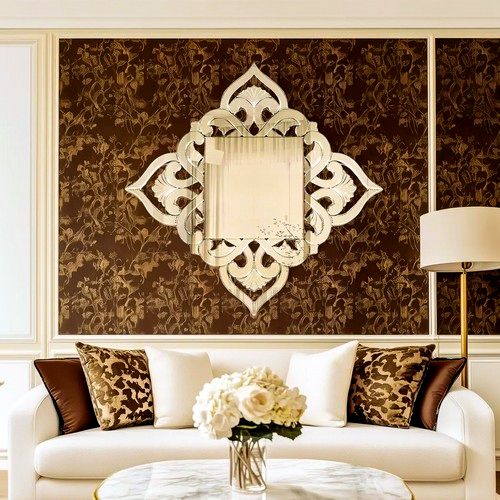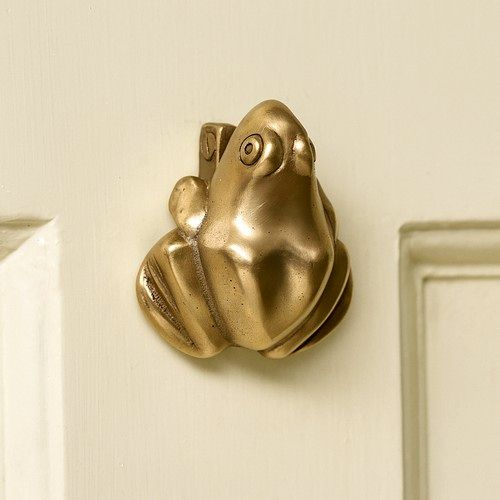Madhubani Paintings: A Glimpse into Tradition and Artistry
Madhubani paintings speak in patterns, woven out of tradition, faith, and the memory of rituals passed down like heirlooms. Rooted in the heartlands of Bihar, this folk form is not simply art, it is a visual prayer, a ceremony of lines and colors. Each frame carries a rhythm of repetition, a symbolic annotation of life, gods, nature, and myth. The colors aren’t just pigments, they are extracts of time, stories soaked in turmeric, lampblack, or rose. It is not technique alone but the intentional harmony of detail and devotion that gives Madhubani its staying power. Even the gaps are filled, nothing is left blank, just like life here.
What Is a Madhubani Painting?
A Madhubani painting, also called Mithila art, is a traditional narrative art form from the Mithila region of India and Nepal, with its roots in ancient rituals and domestic storytelling. Characterized by linear precision, flat color application, and intricate detailing, it employs organic mediums like twigs, fingers, and natural pigments. Themes range from devotional icons to nature-inspired elements, sun, fish, peacocks, lotuses, all encoded with symbolic meaning. Originally executed on mud walls during festivals or weddings, the art evolved to handmade paper and canvas without losing its raw authenticity. The stylistic identity relies on filled spaces, there’s no void. The visual grammar includes bold black outlines, ornamental borders, and two-dimensional renderings without perspective. It is less about optical realism and more about symbolic narration, telling the story through motif and metaphor.
What Emotions or Themes Do Madhubani Paintings Commonly Portray?
Madhubani is both a mirror and a metaphor, reflecting lives and elevating them into sacred rhythm. Emotionally, it is rooted in devotion, bhakti, fertility, union, and mythical endurance. Scenes from Radha Krishna’s divine romance, Shiva Parvati’s cosmic marriage, or Sita’s strength during exile all come alive with vibrant hues and symmetrical patterns. The emotional architecture is built through repetition, placement of symbols, and chromatic emphasis, yellow for divinity, red for passion, black for power. You will also find village life moments, ritualistic events, and festivals like Holi or Durga Puja rendered with festive fluidity. Every fish becomes more than a fish, it becomes an omen of prosperity, every tree a symbol of growth, and every border a sacred threshold. The paintings preserve memories and emotions, offering visual mantras, meditative in nature, layered in interpretation.
What Are the Most Recognized Styles in Madhubani Painting (e.g., Bharni, Katchni, Tantrik)?
Madhubani art isn’t monolithic, it unfolds through five distinct yet interconnected styles, Bharni, Katchni, Tantrik, Godna, and Kohbar. Each holds a different visual frequency. Bharni, meaning "filling," is lush with vibrant, saturated colors and divine figures. Katchni, in contrast, relies on fine black lines and minimal use of color, emphasizing line work over shade. Tantrik style uses religious symbolism and geometric abstraction to portray esoteric deities and yantras. Godna, inspired by tribal tattoo motifs, carries earthy, repetitive symbols and a folk energy. Kohbar, deeply ceremonial, celebrates conjugal union and fertility, often used in wedding rituals. These styles are not mere aesthetic choices, they signify purpose, context, and cultural location. They shape the visual language depending on whether the subject is mythological, spiritual, or social. The stylistic spectrum, though regionally bound, becomes a cartography of mood and meaning.
Why Are Madhubani Paintings Still Revered in the Contemporary Art World?
Madhubani has transcended its origin walls without severing its roots. In contemporary contexts, it is revered for its organic authenticity, handcrafted integrity, and culturally immersive storytelling. Modern viewers, exhausted by digital perfection, find solace in its imperfect lines and tactile surfaces. Its ability to encode mythology into metaphor, using symbols understood across generations, allows it to function both as decoration and cultural documentation. Artists have adapted the form to newer mediums, murals, fashion, installations, without diluting its spiritual gravity. It is not nostalgia that keeps Madhubani alive, it is relevance. In every peacock feather and lotus bloom lies a coded reminder of ecological harmony, feminine resilience, and the unseen rituals of village life. That is why curators, collectors, and designers continue to engage with it, not as a relic but as a living language.
Techniques, Mediums & Artistic Tools for Madhubani Paintings
Every Madhubani painting is a ritual. The process itself is slow, meditative, like a chant through brushstrokes. The artist doesn't just paint, she offers. Traditionally, women would adorn walls or floors during occasions with fingers dipped in rice paste or turmeric, breathing patterns into clay surfaces. Today, twigs, nib pens, and matchsticks have replaced fingers, yet the spiritual intent remains. Pigments are hand prepared from kitchen spices, flower extracts, and soil, an alchemy of texture and tone. Surfaces vary from khadi cloth and canvas to handmade paper, absorbing pigment with a tactile, grainy intimacy. Technique and surface together define the aesthetic vibration of the artwork.
How Were Madhubani Paintings Traditionally Created?
Traditionally, Madhubani was created as domestic mural art, painted on freshly plastered mud walls using fingers, twigs, or rice paste. This was not a leisurely pastime but a cultural mandate, integral to weddings, festivals, and religious ceremonies. The technique was intuitive but deeply symbolic. Each line and border was drawn without stencils or corrections, representing spiritual acceptance. Brushes made from bamboo sticks or matchsticks were dipped in natural dyes prepared at home, coal for black, turmeric for yellow, cow dung for green. Over time, this wall art transitioned to handmade paper and fabric, yet the manual craft and communal rhythm remained. The lack of perspective, flat backgrounds, and decorative edges weren’t limitations, they were cultural signatures. These works weren’t signed, they were anonymous acts of offering. Today’s artists, even when working on canvas, emulate the traditional ethos, creating with ritual respect and textural fidelity.
What Painting Mediums Are Commonly Used in Madhubani Art (e.g., Natural Dyes, Plant Extracts)?
Madhubani painters practice natural alchemy. Instead of synthetic colors, they rely on plant based, mineral, and kitchen based pigments. Yellow comes from turmeric or pollen, red from sandalwood or kusum flowers, blue from indigo, green from crushed leaves, black from soot and cow dung mixture. These natural mediums don’t merely add color, they add contextual depth. The use of earthen or water based mediums not only sustains the environment but connects the artwork to agrarian roots. Dyes are often mixed with gum arabic or water to bind better with handmade paper or cloth. Even today, traditionalists avoid synthetic inks, as the natural medium symbolizes purity, essential in religious or matrimonial contexts. The process of pigment preparation is laborious but sacred. The resulting palette is earthy, bright, and unmistakably alive.
What Role Do Surfaces Like Fabric or Handmade Paper Play in Madhubani Art?
Surface matters, it is not passive, it converses with the pigment. Handmade paper, with its fibrous grain and irregularities, absorbs color unevenly, giving Madhubani a rustic texture that echoes its origin. Cloth, especially khadi or cotton, lends softness and flow, turning the painting into a wearable or ceremonial object. Each surface responds differently to natural dyes. Paper holds crisp edges, cloth breathes and blurs. These choices aren’t aesthetic alone, they are philosophical. Using handmade, organic surfaces is an homage to the earth, aligning the art with cycles of nature. The absorbent quality of these materials complements the mineral dyes, allowing them to age gracefully, developing a patina over time. This imperfection is not flaw, it is formational.
Artistic Intent and Visual Storytelling of Madhubani Paintings
Madhubani painting is more than visual, it is performative and mnemonic. Each painting operates like a sacred diagram, charting myths, mantras, and memories through shapes and chromatic pulses. The artist isn't merely composing, she’s conversing, with gods, nature, ancestors. There’s a purpose behind every line, a prayer within every pattern. Borders aren’t decorations, they are guardians of intention. The painting becomes a compact world where cosmic truths and daily realities coexist. Visual storytelling in Madhubani is direct yet layered, mythological yet intimate. It doesn’t just depict, it evokes.
What Stories or Messages Do Madhubani Paintings Aim to Convey?
The stories etched in Madhubani paintings are both personal and mythic. They traverse the celestial and the domestic, from Sita’s wedding to a mother feeding her child. The paintings often illustrate episodes from Hindu epics like the Ramayana, Mahabharata, and Puranas. But it is not limited to mythology. Nature worship, seasonal change, marriage customs, and agricultural rituals also find expression. Even contemporary issues, like deforestation or women’s rights, are visualized using traditional motifs, turning the form into a living archive. The messages aren’t didactic, they unfold through symbolic codes, fish, fertility, lotus, purity, sun, energy, elephant, strength. These elements combine with storytelling grids, allowing Madhubani to function as both narrative and mnemonic tool, a painted chronicle.
How Do Artists Express Political, Spiritual, or Cultural Symbols Through Madhubani Art?
Madhubani is a map of meanings. Artists subtly embed political commentary, spiritual narratives, and social critique within the sanctified visual language. A tree may symbolize environmental consciousness. A goddess might embody feminist strength. The use of yantras and tantric forms invokes spiritual discipline, while painting Draupadi's disrobing becomes a reflection on dignity. The fish, turtle, and snake aren’t just animals, they are symbols of cycles, karma, and rebirth. The repetition of these symbols builds a vocabulary that viewers internalize over time. Even the act of filling every inch is symbolic, denoting completeness, abundance, and a refusal to leave life blank. Through this coded symbolism, Madhubani maintains a spiritual political duality, beautiful, yet urgent.
How Do Patterns, Borders, and Color Palettes Influence the Mood of Madhubani Paintings?
Mood in Madhubani isn’t incidental, it is constructed. Repetitive borders create rhythm, guiding the viewer’s eye in circular flow, like visual chants. The symmetry evokes spiritual equilibrium. Intricate linework fosters meditative absorption, while bold black outlines establish visual clarity. Color palettes are deliberate, red channels passion and life force, yellow glows with divinity, green symbolizes growth, and blue reflects cosmic vastness. Even negative space is orchestrated, either completely filled to signify abundance or strategically left to balance visual weight. Patterns like spirals, vines, and lattice grids add texture, suggesting continuity, fertility, or transformation. Mood is not just emotional, it is ritualistic. The whole canvas is designed to feel sacred.
Purchase, Collection & Investment of Madhubani Paintings
Madhubani paintings are not just art forms they are testaments to memory, myth, and meticulous lineage. To collect one is to inherit a narrative etched in time, created with twigs, nib pens, and fingers dipped in natural dyes. These are not factory made decor items they are chants on paper, fragments of oral history stitched with vermillion, lampblack, and turmeric. A good collection of Madhubani works offers more than aesthetics it layers your space with heritage. Investment here is cultural continuity. Buying, collecting, or gifting such art becomes a quiet resistance against erasure. Their rarity, individuality, and lack of duplication drive their value.
Where Can You Buy Authentic or Reproduction Madhubani Paintings?
Authentic Madhubani paintings can be sourced from government run emporiums such as Central Cottage Industries, Dilli Haat, or Tribes India outlets, which maintain artist rosters and provenance. These paintings are also available at tribal or state sponsored art fairs across India, especially in Bihar. Online platforms like Gaatha, Craftsvilla, or Dastkar provide certified pieces from registered artists. Artisan collectives in Madhubani district itself often work with NGOs or SHGs and are known to provide signed pieces or work under the Geographical Indication act. Avoid machine printed reproductions lacking brush variation or pigment granularity these miss the soul of the original.
How Can You Verify the Authenticity of a Madhubani Painting?
Authenticity rests in medium and method. Traditional Madhubani uses natural dyes indigo, lampblack, red sandal, and cow dung wash for priming. The line work is intricately hand drawn, often using bamboo twigs or matchsticks. An authentic piece usually has visible pigment irregularities, deliberate asymmetry, and repetition patterns with spiritual or folk iconography like Krishna Radha, Shiva Parvati, or the Tree of Life. GI tagged paintings from the Mithila region come with certification. Many respected artists also sign their work in Maithili script. The texture, smell of the organic base, and uneven brush lines further distinguish the original from mass produced prints.
What Makes a Madhubani Painting a Worthwhile Investment?
Unlike commodified prints, Madhubani paintings are not mechanically repeatable. Each one holds the visual DNA of its maker passed matrilineally or within tight village clusters. The use of natural pigments ensures aging like wine colors deepen and soften, gaining patina rather than losing appeal. Investing in Madhubani is investing in a living tradition and dying ecology. As more artists shift to digital mediums or abandon folk traditions, these hand painted works become rarer. Their value is tied to cultural preservation, uniqueness of narrative, and the sheer labour invested making them increasingly appreciated in folk art auctions and heritage exhibitions globally.
Care, Framing & Preservation of Madhubani Paintings
Madhubani paintings are fragile testimonies drawn on handmade paper, cloth, or cow dung washed walls. Preserving one is akin to preserving a scripture. The pigments often derived from soot, leaves, and flowers react to light, air, and time. Storage must respect its vulnerability and living energy. Avoid sealed glass that traps moisture. Use open breathing materials and keep the surface away from constant touch or pressure. Framing it right preserves its organic character. Restoration, if needed, is not a cosmetic fix but a ritualistic care. Only those familiar with folk mediums and earth pigments can retain its originality through subtle, skilled intervention.
How Do You Properly Store And Maintain A Madhubani Painting?
Proper storage begins with awareness of materials. Since Madhubani paintings are created on handmade paper or cloth using organic pigments, they are highly sensitive to sunlight, humidity, and handling. Frame the painting using acid free mounts to avoid chemical reactions over time. Avoid placing them in kitchens, bathrooms, or areas prone to moisture. If unframed, store flat between acid free sheets or roll them gently around a cardboard tube never fold. Keep them in a dry, dark cupboard with silica gel packets to regulate humidity. Routine dusting with a soft, dry microfiber cloth helps maintain surface clarity without damaging pigment layers.
What Frames And Materials Best Complement The Madhubani Aesthetic?
Earth toned or raw wooden frames work best they echo the natural roots of the painting’s medium. Teak or Sheesham wood enhances the visual texture. Float mounting, where the artwork appears to float inside the frame without touching glass, respects its hand made irregularity. Avoid overly ornate or glossy finishes that distract from the dense detailing of the art. Instead, go for handmade frame styles or jute bordered mounts that reference rural craftsmanship. For cloth based Madhubani, a textile backing inside the frame complements the canvas. The goal is not just aesthetic framing but cultural harmony between the container and the contained.
Can Madhubani Paintings Be Restored Without Losing Their Original Feel?
Yes, but only when restoration is undertaken with sensitivity toward the medium and the artist’s intent. Conventional restoration techniques may not suit Madhubani due to its organic pigments and handmade base. Conservation experts specializing in Indian folk or tribal art use natural binders and pigment matching techniques to restore flaked paint or dulled areas. They often engage in patching micro tears using similar textured paper or cloth. The key is to avoid over restoration preserving age marks, natural fading, and pigment layering keeps the soul intact. Rejuvenation must enhance structural integrity without erasing the artwork’s cultural and tactile authenticity.
What Are Common Damages Madhubani Paintings Suffer Over Time?
The most prevalent damage includes fading due to UV exposure, particularly in yellows and reds made from turmeric or vermilion. Cracking of paper or canvas can occur from excessive dryness or folding. Pigments can also flake if applied too thickly or if the binder degrades. Humidity fosters mildew or mold growth, especially in cloth based works. Insects like silverfish can damage untreated paper. Poor quality framing leads to pigment bleed or surface abrasion. Neglect like rolling without protection or touching the painted surface repeatedly accelerates decay. Timely inspection, controlled environment, and respectful handling are essential for their long term survival.
Home Decor, Styling & Mood Setting With Madhubani Paintings
Madhubani is not just decor it’s vibration. These paintings transform blank walls into storytelling surfaces. Their use of symbolism fish for prosperity, peacocks for beauty, sun and moon for cosmic rhythm infuses space with intention. A hallway becomes a passage through folklore. A study is animated with ancestral whispers. The repetitive geometry, coupled with vibrant storytelling, adds rhythm to minimalist rooms and depth to rustic ones. Unlike modern art’s abstract ambiguity, Madhubani communicates directly it's emotive, spiritual, and often celebratory. It has the power to center a space emotionally and aesthetically, becoming both anchor and inspiration in interior styling.
How Can Madhubani Paintings Influence A Room’s Ambience Or Tone?
Madhubani paintings create a layered ambiance infusing rooms with cultural density, ritual warmth, and storytelling charm. The color palettes are bold yet earthy, using ochres, blacks, reds, and indigoes to evoke vitality without overwhelming the eyes. Their symmetrical layouts bring a meditative rhythm, aligning with Vastu principles. A large painting with Radha Krishna in a living room radiates romance and devotion, while a depiction of Lakshmi or the Tree of Life can lend abundance and grounding to a workspace. These paintings also influence acoustics subtly due to their textured surfaces, softening echo and creating an inviting emotional tone in any room.
What Interior Styles Pair Well With Madhubani Artwork?
Madhubani’s adaptability lies in its storytelling strength and graphic boldness. It naturally fits into ethnic and rustic interiors with clay pots, wooden furniture, and warm lighting. In bohemian settings, it complements layered textiles, indoor plants, and tribal crafts. Eclectic homes benefit from its conversation starting presence. Even minimal or industrial interiors can find balance in a singular large Madhubani piece framed in raw wood providing warmth amidst concrete and glass. Japandi or Wabi Sabi styles, which focus on imperfection and natural texture, can also embrace Madhubani, especially if the painting has visible paper creases, hand drawn strokes, or muted natural pigments.
How Do You Choose The Right Madhubani Painting For A Living Room, Hallway, Or Study?
In a living room, opt for a large horizontal piece or a triptych centered around a universal theme like celebration, fertility, or divine love Radha Krishna or the Tree of Life work well. In a hallway, choose narrower vertical formats with intricate flora fauna designs or processional depictions. These guide the movement of the viewer through space. For a study, select monochromatic or two tone pieces, preferably from the Kachni style, which uses fine lines over color fields suiting the contemplative mood. Consider the dominant wall color and lighting earthy backdrops and soft spotlights highlight Madhubani’s tonal richness and delicate brush detailing.
Cultural Impact & Historical Legacy of Madhubani Paintings
Madhubani paintings breathe with centuries of ceremonial breath. They aren’t mere visuals but testimonies, a language spoken in line, color, and motif. Born in the womb of Mithila, this folk art form carries ancestral memory and spiritual reflection. It grew not from institutions but from the lived rhythms of rural women, marriage, harvest, rituals, etched onto walls and floors. The painting is not a result but a rite. Each peacock, lotus, fish, or deity is coded with symbolism that unspools tales of continuity. Over time, as the canvas shifted from clay walls to handmade paper, the soul remained unchanged, uncompromisingly local, yet universally resonant.
What Is The Historical Significance Of Madhubani Paintings Across Civilizations?
Historically, Madhubani painting stands at the convergence of ritual and expression. It evolved not in palaces but in courtyards, especially during weddings and festivals where women adorned huts with sacred imagery. Rooted in the Mithila region, this art form served as visual scripture, narrating epics like the Ramayana and invoking gods like Krishna and Lakshmi. As a matrilineal practice, its significance lies in the way it preserved oral histories and cultural codes within its geometric and floral frames. While the modern world sees it as "folk art," civilizations of the past used it as a form of living documentation, votive, spiritual, communal.
Regional Contribution of the Mithila Region
Mithila did not merely contribute an art form, it protected an aesthetic ethos. Its artistic contribution lies in how it held space for women's voices to emerge through brush and pigment, uninterrupted by patriarchy or external rule. The region gave the world an uninterrupted, matriarchal artistic continuum, where grandmothers passed pigment-making secrets to granddaughters. The practice became a sanctified act, connecting the mundane to the divine. Even today, villages like Jitwarpur serve as living museums, where homes are canvases and tradition breathes with fresh pigment every morning. Mithila transformed private creativity into public legacy.
How Did The Mithila Region Contribute To The World Of Folk Painting?
Mithila’s contribution to the folk painting universe is foundational. It offered a space where women, often outside formal education, developed their own iconography and technique, building one of the few matrilineal artistic movements in the world. The region preserved a five-style system, Bharni, Katchni, Tantrik, Godna, and Kohbar, each catering to distinct thematic and social functions. Furthermore, it resisted extinction by adapting its medium, shifting from mud walls to handmade paper post the 1960s Bihar famine. Through this resilience, Mithila not only preserved art but also redefined its place in the cultural and economic lives of rural artists.
Evolution Through Individual Artists
The trajectory of Madhubani art shifted when women artists began gaining national and global recognition. Sita Devi’s meticulous Bharni work brought the form to state galleries. Ganga Devi, known for her Tantrik themes, presented her art at the Mithila Museum in Japan, creating global ripples. Baua Devi, recipient of the Padma Shri, infused modern themes without disrupting tradition, challenging the binary of folk and fine art. Their legacy lies not only in the art they created but in how they elevated village tradition to international conversations. Through them, Madhubani became both a cultural artifact and an evolving movement.
Which Artists Shaped The Evolution Of Madhubani Art Movements?
Sita Devi, with her Bharni style, introduced vibrant goddesses and floral intricacies to the world stage, setting a tone of high saturation and mythic focus. Ganga Devi deepened the scope by venturing into abstracted Tantrik imagery and documented her life with cancer in a deeply moving visual diary. Baua Devi brought emotional storytelling, often centered around women’s lived realities. Each artist not only preserved the form but expanded it, layering political awareness, feminine agency, and personal narrative into the tradition. Their recognition at national and global platforms carved space for Madhubani in the canon of serious art history.
Madhubani Paintings vs Other Art Forms
Madhubani refuses emptiness. Where minimalism seeks restraint, Madhubani saturates the canvas with meaning, negative space is absence, and absence here is taboo. It fills every inch with narrative, whether through double lines, rice paste outlines, or natural symbolism. Modern abstract and digital works often pursue ambiguity or technological perfection, but Madhubani values imperfection, continuity, and texture. It is more than aesthetic, it is a philosophy in ink, an embrace of divine order through elaborate symmetry and color. It doesn’t invite interpretation as much as it initiates you into a worldview, one where gods are always present, and stories never end.
How Are Madhubani Paintings Different From Modern Abstract Or Minimalist Art?
Modern abstract and minimalist art often emphasize form over content, seeking emotional resonance through negative space, geometric purity, or color fields. Madhubani, in contrast, thrives on dense representation. Every symbol, a fish, tree, or sun, holds iconographic weight. It is governed by symmetry and borders, creating an intentional visual rhythm. Where abstract art might seek internal subjectivity, Madhubani enacts collective memory. Its purpose is not ambiguity but revelation. The stylistic difference lies in detail, fine hatching in Katchni, spiritual iconography in Tantrik style, and narrative intensity in Bharni. It's not just painted, it’s ritually constructed.
What Sets Madhubani Paintings Apart From Digital Art Or Prints?
Madhubani’s essence lies in human imperfection. Each line wavers with intent, every pigment is the result of natural alchemy, soot, turmeric, indigo. Digital reproductions may mimic the image, but not the soul. No two Madhubani paintings are identical, even when the subject is the same. There’s tactility to the handmade, the pressure of brush, the grain of paper, the flow of dye. Digital art flattens texture, Madhubani embraces it. Where a print standardizes, Madhubani individualizes. Each piece is an artefact of lived tradition, time, and weather, bearing the scent of earth, smoke, and heritage.
How Do Natural-Dye Madhubani Works Differ From Modern Acrylic Versions?
Natural-dye Madhubani paintings are often created with handmade pigments, charcoal for black, turmeric for yellow, and leaves for green, resulting in subtle gradations and earthy textures. These works possess a warmth and imperfection that modern acrylics can’t replicate. Acrylic-based Madhubani offers color vibrancy and longer durability, but often lacks the rustic soul that natural pigments lend. Natural dyes bind culturally, used since Vedic times, and create not just visuals but olfactory and tactile memories. Acrylic, while practical for urban audiences, distances the art from its soil. One evokes ritual, the other, convenience.
Emotional & Symbolic Value of Madhubani Paintings
Madhubani paintings aren't just decor, they’re talismans. They carry with them stories of love, fertility, nature’s rhythm, and divine protection. Whether gifted or inherited, they don’t just hang, they speak. Their borders act as spiritual boundaries, their motifs as blessings. In families, they function like oral traditions, preserving rituals and identity. In modern homes, they connect diasporic individuals back to their roots. Emotional value emerges not only from aesthetics but from meaning, how each lotus recalls purity, each peacock courtship, each tree the axis mundi. To gift or inherit one is to pass on a worldview steeped in spirit and story.
Can Madhubani Paintings Serve As Meaningful Gifts For Special Occasions?
Absolutely. Madhubani paintings are deeply symbolic, often associated with sacred themes like fertility, prosperity, and divine protection. For weddings, Kohbar paintings with lotus, bamboo, and Shiva-Parvati imagery are traditional blessings for marital harmony. For housewarmings, nature motifs like trees, birds, and fish invite abundance and peace. Gifting a Madhubani painting isn't transactional, it’s an invocation. Each line and motif carries meaning, making it a personalized heirloom rather than a decorative item. Unlike mass-produced gifts, these paintings connect intention to heritage, sentiment to ritual.
What Emotional Value Do Inherited Or Family Madhubani Paintings Hold?
Inherited Madhubani paintings serve as visual diaries of lineage. Passed down across generations, they become cultural artefacts, imbued with family narratives, regional symbolism, and devotional resonance. They are often linked to specific life events, a wedding, a festival, a birth, and thus act as markers of memory. The tactile nature of handmade pigment, the faded borders, the slight smudge, all of it evokes presence and continuity. In families, such paintings aren’t just “owned”, they are honored. They occupy sacred spaces in the home, becoming silent witnesses to generational change while remaining unchanged themselves.
Why Do People Feel A Deep Connection To Paintings From The Mithila Tradition?
Because they mirror inner landscapes. The themes, union, fertility, balance, faith, are universal. Yet the form is distinctively local. People feel drawn to the Mithila tradition because it collapses the gap between myth and daily life. The paintings do not merely depict gods, they dwell with them. Each painting becomes a visual chant, repeating stories and symbols that comfort, affirm, and inspire. Their hand-drawn nature, their organic textures, and their unapologetic detail create emotional anchoring. For many, Madhubani is less an art form and more a spiritual inheritance, rooted in the mud but reaching the divine.
Frequently Asked Questions (FAQs)
What Defines A Painting As Madhubani?
A Madhubani painting is defined by its intricate double-line borders, symbolic geometry, flat perspective, and dense patterning. Originating from Mithila, it employs natural themes, animals, flora, celestial elements, and religious motifs. It avoids negative space, favoring full coverage with repetitive patterns, and uses twigs, fingers, or nib pens with natural dyes or pigments. Style-wise, it belongs to one of five forms, Bharni, Katchni, Tantrik, Godna, or Kohbar.
Can Madhubani Paintings Be Recreated Authentically Today?
Yes, many contemporary artists in villages like Ranti and Jitwarpur continue to preserve and practice traditional methods, including pigment preparation, brush-making, and symbolic construction. Institutions and workshops also help train new generations in the original techniques. Authentic recreation depends on materials, motifs, and intention, if these are honored, the artwork retains its soul even in modern settings.
How Do You Protect Madhubani Artwork From Light And Moisture Damage?
To preserve Madhubani paintings, especially those on handmade paper or cloth, it is crucial to frame them with UV-protective glass and keep them away from direct sunlight. Avoid humid environments, and consider archival-quality backing and acid-free mats. For fabric-based works, rolling in acid-free paper and storing in dry containers prevents mold and fading. Never laminate.
Are Madhubani Paintings Still Relevant In Modern Art Scenes?
Yes, Madhubani art features in galleries, cultural festivals, fashion, and even digital collaborations globally. It has adapted without diluting, embracing new media, feminist themes, ecological narratives, and political commentary, while staying rooted in traditional techniques and symbolism. Its unique blend of storytelling and visual richness makes it a sought-after form in both heritage and contemporary circles.
Can Madhubani Styles Be Used In Contemporary Painting Practices?
Absolutely. Many artists now integrate Madhubani motifs into murals, textiles, book illustrations, and fusion canvases, often juxtaposing traditional symbols with modern themes like urbanization or identity politics. This stylistic crossover preserves the form while expanding its language, allowing it to converse with a global audience without erasing its cultural DNA.
